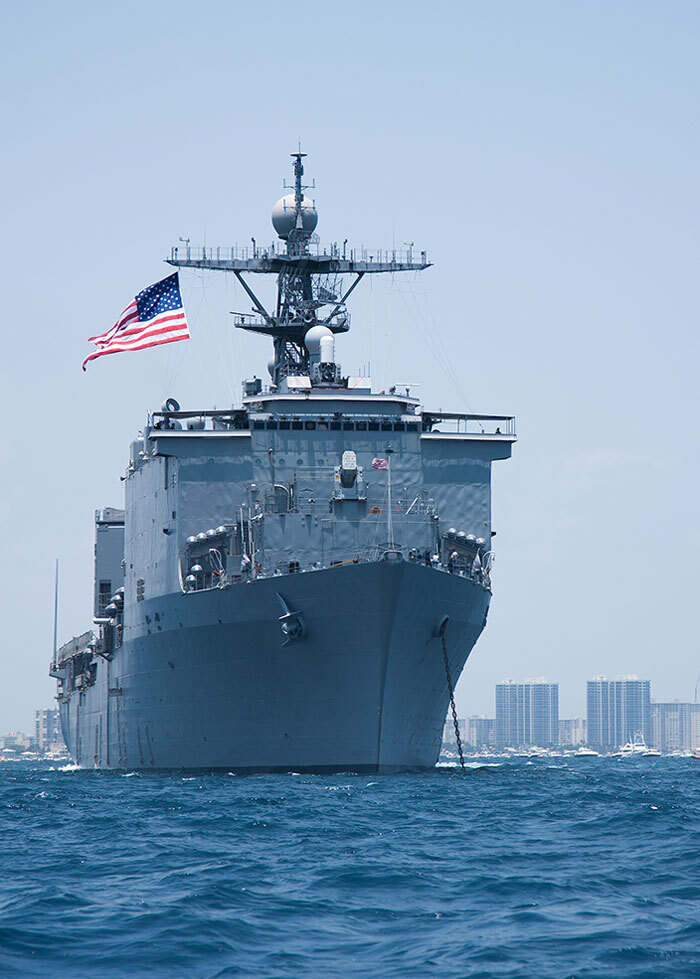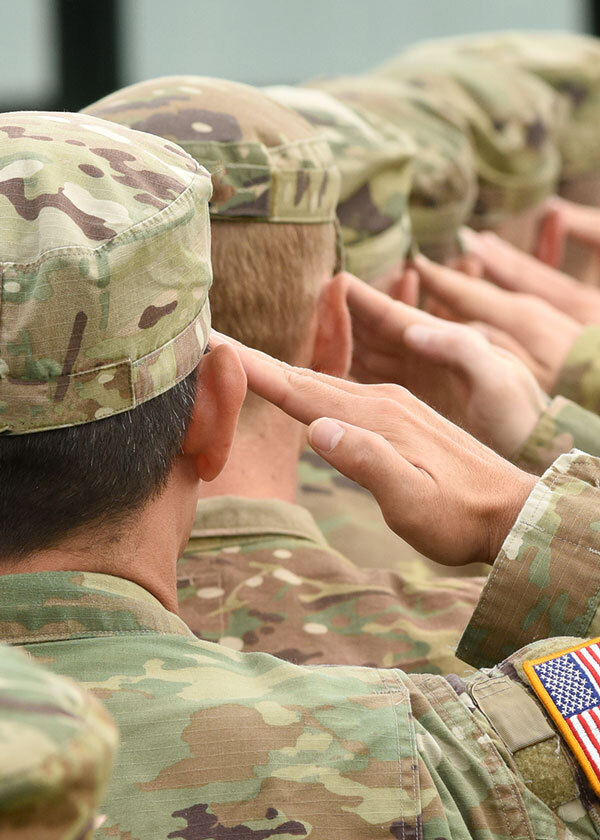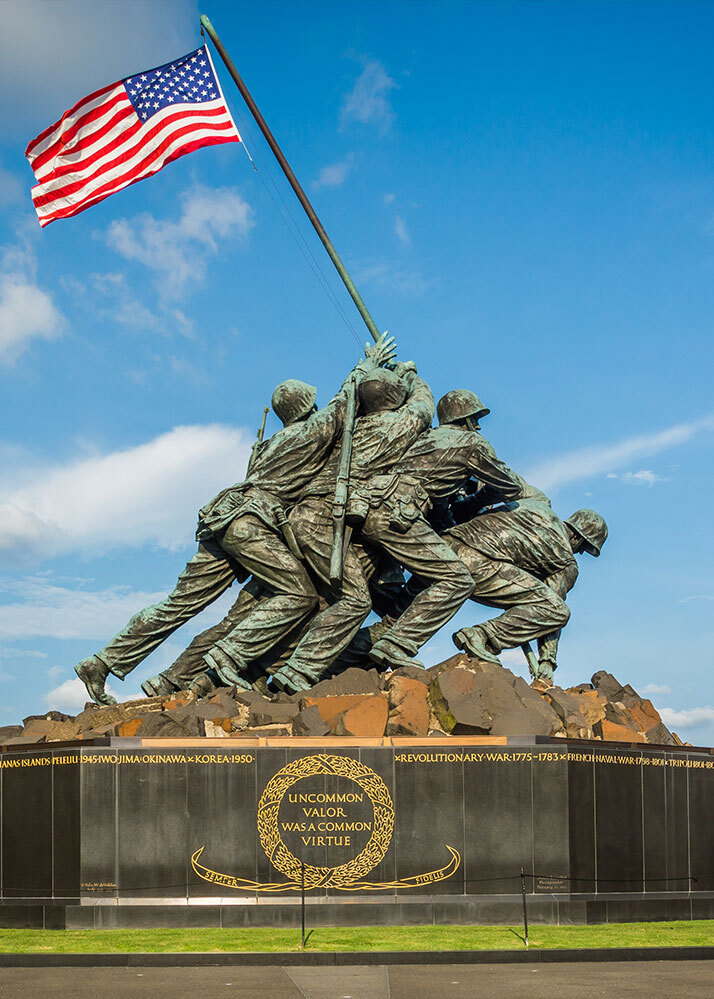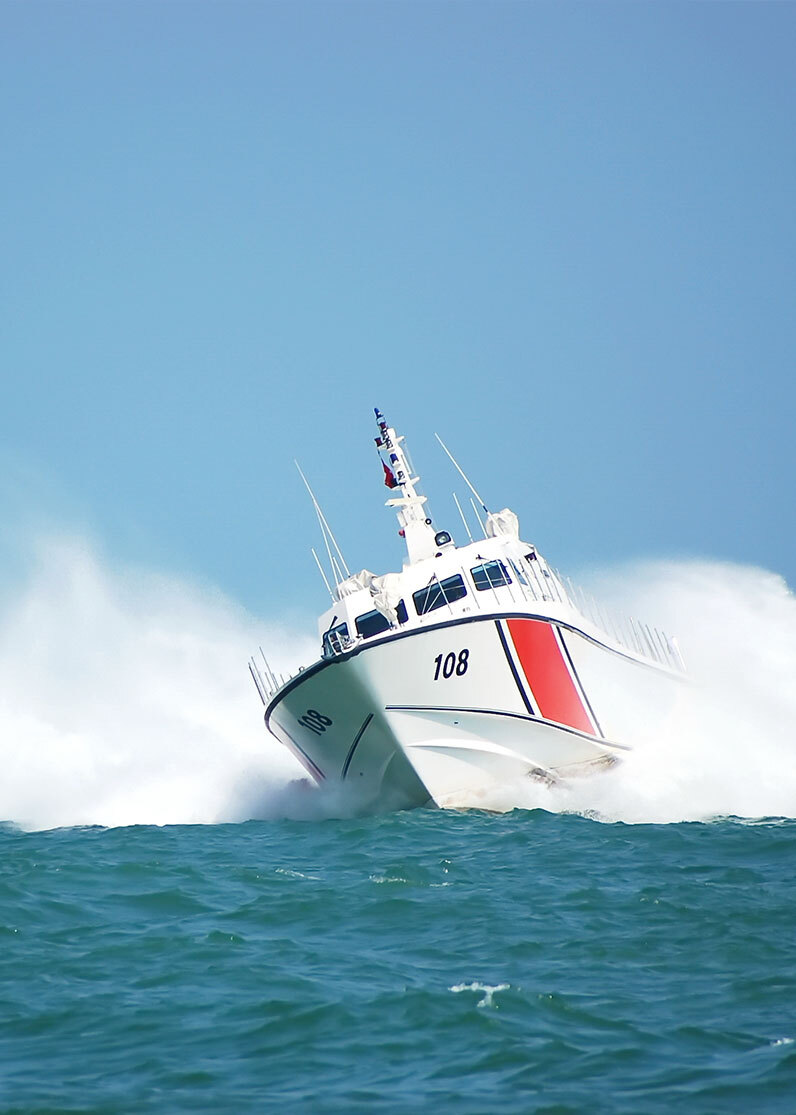U.S. Military Veterans & Mesothelioma.
Mesothelioma occurs among people from many walks of life. But this cancer develops in one group of people more often than in any other—those who served in America’s armed forces.
U.S. military veterans become mesothelioma patients because the Navy, Marines, Coast Guard, Army, and Air Force made use of asbestos in the not-too-distant past.
Veterans Exposed to Asbestos
The veterans most exposed to asbestos were those who served in the years after World War II and before the first Gulf War. However, even recent veterans may have been exposed if they served abroad in countries still decades behind the U.S. in curbing asbestos use and decontaminating places where the cancer-causing mineral would have been present.
Hope & Help for Veterans
Fortunately, there is hope and help for veterans with mesothelioma and other asbestos-related diseases.
Financial Aid
VA benefits are available to those who apply & qualify,
Medical Care
Available at hospitals operated by the U.S. Veterans Administration.
Legal Claims
Veterans can also seek compensation through the courts.
Benefits Available to Veterans with an Asbestos Disease
Former sailors, soldiers, and airmen aren’t the only veterans eligible to receive VA benefits for mesothelioma and other asbestos-related diseases. Also eligible are those who held officer rank in these federal agencies:
- U.S. Public Health Service
- National Oceanic and Atmospheric Administration
- National Geodetic Survey
- Veteran, married 75%
- Veteran, married with children 85%
- Veteran, needing a help at home 95%
- Veteran, deceased 50%
- Surviving spouse/children 30%
Medical Care for Veterans
with an Asbestos Disease
Mesothelioma cancer is treated by doctors at designated hospitals within the Veterans Administration healthcare system.
Mesothelioma treatment within the VA hospital system may be provided at no cost to eligible and qualified veterans.
Veterans may alternatively seek mesothelioma care outside the VA healthcare system through the Veterans Choice Program for Mesothelioma.
How Veterans Were Exposed to Asbestos
Asbestos was used extensively by the armed forces. The reason was that asbestos made whatever it was added to or mixed with fireproof.
Fireproofing was important aboard vessels of all kinds. Not just those that carried large amounts of powder packed into shells, torpedoes, and mines, but also those that carried fuel and galley cooking oil—as did nearly every ship in the fleet.
Asbestos also made an excellent heat insulator. As a result, it was used in everything from planes to tanks to trucks. It was used in buildings on base. It was used in underground pipelines. It was coated over electrical wires. It was an ingredient in paint.
The U.S. made military use of asbestos long before World War II. So did most other nations. The U.S. began eliminating asbestos from its arsenals and bases in the late 1970s. However, it took decades to bring the problem under control.
The veterans who served in the early 1990s were perhaps the last to face unabated risk of asbestos exposure from materiel belonging to the U.S. military. Even so, veterans who ended their tours as recently as this year may have been exposed to asbestos if they spent time in any number of international hotspots where the asbestos problem continues to exist.
- Assigned to duty aboard a ship
- Assigned to duty in a motor pool or maintenance hangar
- Assigned to duty in a construction or engineering unit
- Stationed or quartered in any asbestos-contaminated building
- Fought or stationed in a foreign land with no ban on asbestos or asbestos-mitigation
Secondary Asbestos Exposure
Veterans who brought asbestos dust home with them on their uniforms or fatigues may have inadvertently exposed their spouses and children to it. This is known as secondary exposure and can create as big a disease risk for family members as primary exposure does for the veteran. Spouses and children who develop mesothelioma that can be traced back mainly to a military veteran’s asbestos exposure need to talk to a qualified mesothelioma lawyer to review their legal rights and compensation options.
Asbestos Exposure & Navy Veterans
On perhaps the majority of U.S. Navy ships in service between the years 1940 and 1984 (and certainly on all ships built between 1945 and 1972, almost no place aboard was free of at least some asbestos.
The largest amount of asbestos on any vessel was invariably contained in the thermal insulation used to keep high heat away from crew and sensitive equipment.
Much of this thermal insulation was in the form of paint applied over bulkheads, plates, hatches, electrical systems, propulsion shafts, boilers, pumps, ducts, pipes, galley equipment, gun turret conveyor belts, decking, and more.
Any time asbestos thermal insulation was jostled, tiny particles of asbestos could be counted on to break free and begin floating in the air. This was a particularly serious problem below decks where cabins, rooms, and compartments tended to be small, which made it more likely a significant volume of airborne asbestos would be inhaled by anyone assigned to or passing through those spaces.
Asbestos Exposure & Air Force Veterans
Depending on year of service, U.S. Air Force veterans could have been exposed to asbestos in multiple locations on base.
Places where asbestos would have been encountered include administrative buildings, supply huts, armories, control towers, motor pools, hangars, barracks, family quarters, mess halls, and rec rooms.
Basically, any structure built from approximately the time of World War II until around the early 1980s likely contained at least some asbestos—potentially enough to cause mesothelioma, asbestosis, or other condition decades later in the life of veterans so exposed.
Asbestos Exposure & Army Veterans
There were many places within the perimeter of a base or fort where U.S. Army veterans could have sustained asbestos exposure.
Structures built just prior to the Second World War and at any time until around the first term of President Ronald Reagan probably used paints, cements, tiles, wallboards, roofing, insulation, pipes, and other construction materials laced with the carcinogenic mineral.
Such structures would have included those dedicated to operations and planning activities, equipment maintenance, ammunition storage, and troop feeding, housing, and leisure.
Asbestos also could have been encountered from being near the brake systems of vehicles, including troop carriers, tanks, and staff cars.
From these various exposures, Army veterans 10 to 50 or more years after discharge might find themselves affected by asbestos diseases such as mesothelioma and asbestosis.
Asbestos Exposure & Marine Corps Veterans
Veterans of the U.S. Marine Corps were subjected to a double whammy of sorts when it came to asbestos exposure. First, they could come into contact with airborne particles of friable asbestos on base. Second, owing to the amphibious nature of the Corps, Marine veterans could also sustain asbestos exposure aboard vessels.
Asbestos was used in the making of buildings on base and in the production of vessels belonging to the Marines and to the Navy.
Asbestos use peaked in the late 1970s but continued for the better part of another decade.
Asbestos exposure has been problematic for Marine Corps veterans because fibers from the mineral can become trapped in the lungs and/or intestines. That sets the stage many years later for mesothelioma, asbestosis, or other asbestos-related conditions to attack.
Asbestos Exposure & Coast Guard Veterans
Veterans of the U.S. Coast Guard ran all the same risks of exposure to asbestos as did members of the Navy.
Coast Guard cutters and other types of vessels utilized by the service contained asbestos thermal insulation and asbestos-laced components the same as did Navy ships if built between the decade of the 1940s and 1980s.
Moreover, asbestos exposure would likely have occurred on land as well, since many Coast Guard stations and bases consisted of docks, operations centers, repair facilities, personnel-occupied structures, ammunition depots, and other buildings that were made with materials containing asbestos.
Coast Guard veterans exposed to asbestos were as a consequence placed at risk of developing an asbestos disease of the lungs or abdomen.
Filing a Claim for Veterans Benefits – Mesothelioma & Other Asbestos Diseases
In order to receive asbestos-related medical and financial help from the Veterans Administration, a claim first must be filed. Here is what is needed at a minimum.
Eligibility
- Discharge status as anything other than dishonorable.
- More than 50% of asbestos exposure occurred during military service.
Documentation
- Summary letter listing all asbestos exposures before, during, and after military service.
- Medical records showing an asbestos disease diagnosis.
Assistance
- Help preparing and submitting a claim can speed up the process and improve the chances of obtaining best possible results.
- Go here to get help.
Unlike with claims you file in court, those filed with the Veterans Administration are not ordinarily time-limited. In most instances, they can be filed long after mesothelioma is diagnosed.
Asbestos diseases—mesothelioma in particular—are considered disabling. The VA awards compensation for disability claims based on a scale that spans from zero to 100. Claims assigned a scale score of 100 receive the fullest amount of compensation. Typically, veterans’ mesothelioma claims for disability receive the highest score.
If disability is awarded, the veteran can look forward to every month receiving a compensation check. The veteran should also be able to expect a one-time check for compensation starting on the date the disability claim was filed through to the date it was approved.
Mesothelioma Lawsuits
Veterans Can Bring Them
No rule prohibits a veteran from also seeking compensation through the system of justice, even if that veteran is already receiving compensation from the Veterans Administration.
As with non-veterans, the legal options available include litigation and asbestos-trust filings. However, success very often hinges on the experience and skills of the lawyer representing the veteran. Because of the complexities of mesothelioma lawsuits and trust claim filings, it is strongly recommended that only an attorney and/or law firm focused on asbestos cases be consulted.
Get a FREE case review!
The size of compensation obtainable depends in part on the strength of the case. It also depends on the knowledge, skill, and experience of the attorney representing the patient. Go here to talk to a mesothelioma-focused lawyer.
Navy asbestos exposure: was enough done to keep veterans safe?
In late 1943, the Royal Canadian Navy launched a corvette that had perhaps the most honest name ever bestowed in the history of asbestos-clad military vessels.
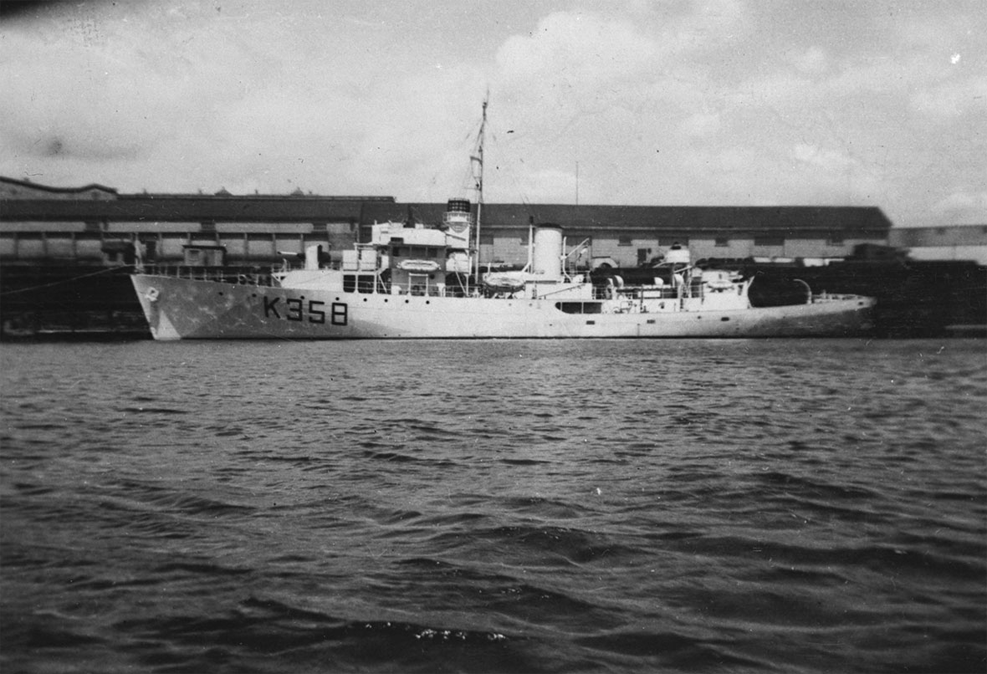
Although the ship was named actually in honor of a Canadian mining town, christening her Asbestos was appropriate seeing as how it was once common practice to abundantly utilize the carcinogenic mineral throughout military vessels.
The practice was not confined to Canada. It was in fact a practice of the U.S. Navy from the late 1930s until the 1970s, with many of the ships built toward the end of that era remaining in service until around the early 1990s.
In 1979, the U.S. General Accounting Office—the federal government’s financial watchdog division—sent a letter to Congress explaining the Navy’s relationship to asbestos and what that branch planned to do about eliminating asbestos from its ships and shipyards.
In a word, not enough.
According to the Navy, most ships that were delivered in 1979 contained little or no asbestos in the form of thermal insulation (which was previously the Navy’s primary use for asbestos), but all had at least some asbestos onboard for other purposes.
The reduction in asbestos thermal insulation traces back to a 1973 decision by the Navy to eliminate asbestos and asbestos-containing materials to the extent that suitable alternative materials were available to take the place of asbestos.
However, the Navy by that time had a huge inventory of unused asbestos thermal insulation material. Not wanting to waste it, the Navy continued putting it into ships then under construction. As a result, it took until mid-1978 for the Navy to exhaust the last of its asbestos thermal insulation stocks.
Midway between 1973 and 1978, the Navy altered its asbestos-elimination decision by saying the only time asbestos insulation would be removed and replaced with non-asbestos substitutes was if the asbestos been damaged or needed to be ripped out in order to permit other repairs. In essence, if there was no need to remove the asbestos, it would stay in place.
The Navy estimated that implementation of this policy shift would by 1984 result in the removal of between 50 and 70 percent of all shipboard thermal asbestos insulation.
Asbestos Exposure and Navy Shipyards
A separate decision by the Navy (this one in 1974 and modified in 1978), addressed the problem of asbestos exposure among workers at its shipyards.
The action was directed mainly at shipyards in Long Beach, California, and Norfolk, Virginia.
Shipyards were under this new order supposed to establish comprehensive asbestos-protection programs centered around the use of special clothing, special equipment, and safer worker practices. It was spelled out for the shipyards when and where to monitor for airborne asbestos fibers, how to clean up and safely get rid of asbestos-laced waste from work areas, and what to formally teach workers about asbestos so they could be safe.
The GAO reported to Congress that the Navy promised the following:
“Workers doing asbestos removal operations (rip-outs) are to be provided work clothes, disposable coveralls, hoods, plastic shoe covers and gloves, and full-face air-line respirators. Before the rip-out is started, the ship’s compartment must be isolated, the ship’s ventilation system blocked off, local ventilation provided, warning signs posted, and guards posted at the entryway. After the rip-out is done and the area cleaned up, a shipyard asbestos monitor or an industrial hygienist must test the air for asbestos fibers to determine if the area is safe for workers to enter without required protective equipment.”
However, as the GAO noted, some workers ignored the protective measures. One reason given was that the precautions made the work harder to perform. It didn’t help matters that the safety gear was poorly designed where comfort and freedom of movement were concerned. But possibly the most significant reason given as to why the workers weren’t following the safety policy was that shipyard bosses kept looking the other way.
In a related matter, the GAO asked what would prevent the Navy from temporarily pulling its vessels from service (although not all at once) and strip each one, stem to stern, of every last fiber of asbestos. The Navy replied it would be too costly.
The Navy stated that, in 1979, “all ships presently in service contain some quantity of asbestos….[A]sbestos fibers are incorporated in the plastic-like body of certain electrical resistors found in electronic equipment. Asbestos is used in tiling on ship decks. Asbestos is used on electric cabling found in galley ranges. Gaskets and packing used throughout shipboard piping systems contain asbestos. Asbestos is used in equipment brakes and clutches. The list is nearly endless. There are so many common uses of asbestos that it is nearly impossible to build a Navy ship free of the mineral.”
The Navy cited as an example, the destroyer U.S.S. Paul Foster (DD-964). By the Navy’s reckoning, that vessel contained 87,634 pounds of asbestos thermal insulation alone.
The Navy also contended that there was too little to be gained from an across-the-fleet total asbestos removal program since there was no way to prevent personnel from encountering asbestos off-ship. What the Navy meant by that was asbestos was basically everywhere and in everything. On land, it was in the administrative buildings, supply huts, machine shops, motor pools, ammunition depots, and barracks of every U.S. base in the nation and abroad. Not only that, but asbestos was in the very homes in which personnel lived off-base, in the retail stores they patronized, and the theaters and clubs they visited on weekend liberty.
From all this, the GAO concluded in its letter to Congress that asbestos exposure was “probably inevitable” for those who wore the uniform.
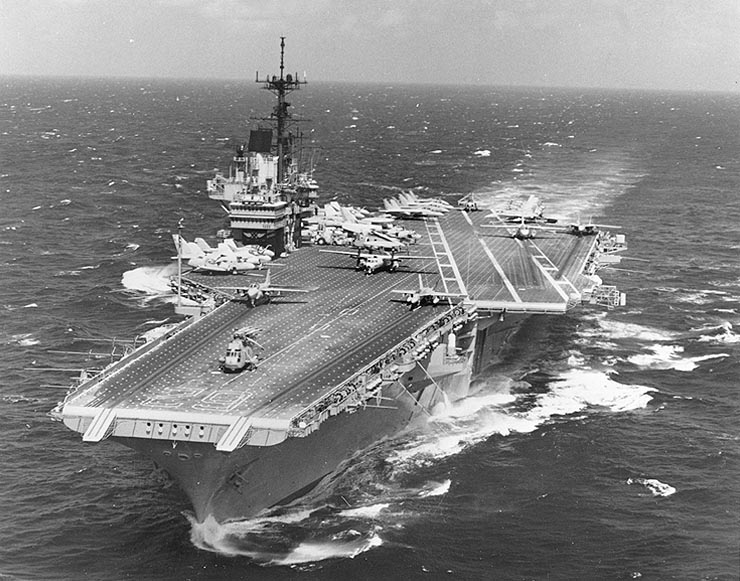
More About Why the Navy Used Asbestos Longer than it Should Have
The Navy was instructed by the Pentagon in the early 1970s to find alternative materials to asbestos for thermal insulation.
Many Navy veterans and their loved ones question why the service didn’t at the time immediately stop using asbestos in the construction of new ships. Here was the Navy’s answer to that puzzle:
“Shipbuilding is an enormously complex task. For large ships, it takes 10 or more years from conceptual design to deliver the first of a class. The design of systems and components, the assemblage of materials, contract placement, work scheduling, hiring and training of workers and many other complex aspects must be carefully coordinated. When such a basic, fundamental change as switching from asbestos insulation to fiberglass insulation is made, all these aspects are affected. It is simply not possible to change, in an instant, from asbestos insulation to non-asbestos insulation throughout the Navy fleet.
“Decisions to replace asbestos thermal insulation with non-asbestos materials had to be made on an individual ship or ship class basis, considering the state of ship construction completion and the cost and schedule delay associated with the change.
“Likewise, it was necessary to negotiate contract modifications with each shipbuilder to eliminate the installation of asbestos. In some cases, the Navy was successful well before 1973-74. For example, the Navy approved use of asbestos-free materials in CVN 68 class propulsion plants in 1971 and in the last two SSN 637 class submarine propulsion plants in 1972. For other ships, such as the first eleven of our new DD 963 class ships, the change was not accomplished until later. Consequently, ships well under construction and already insulated at that time continued through to delivery as late as May 1978 with asbestos insulation. Consequently, some ships were delivered with asbestos thermal insulation since 1973.”
So, what this all means is that the Navy chose to continue using asbestos until its stores of the mineral were exhausted because it was more economically efficient to go that route. In other words, it put dollars and cents ahead of concern for human health and safety.
Get a FREE case review!
Seek the justice you deserve for the injustice done to you. Go here to talk to a mesothelioma-focused lawyer extensively skilled in advocating on behalf of asbestos-exposed veterans.

About the author…
Sara M. Salger received her undergraduate degree from Southern Illinois University Edwardsville, graduating cum laude, and Saint Louis University School of Law for her J.D. where she received an International Law Certificate and litigation focus.


